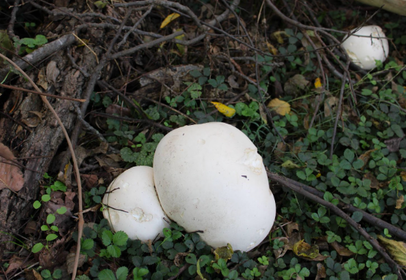 Gardening and Gaiety Under the Moon If you have ever picked up a copy of The Farmer’s Almanac you may have noticed they talk about the Moon a lot more than you would expect for a gardening guide. That is because many folks who have been in the farming and gardening business follow the practice of letting the phase of the Moon determine how and when they plant their food and flowers! More than just a phase, this practice has been in use for ages and despite its mystical seeming nature, many modern farmers swear by the process as well. Part of the appeal is that it is a simple process and can give you the feeling of having some control over your crop yield which, as we all know, can be unpredictable at times. The basic idea behind gardening by the Moon is that the cycles of the Moon affect plant growth. Just as the Moon’s gravitational pull causes tides to rise and fall, it also affects moisture in the soil. In theory, seeds will absorb more water during the full Moon and the new Moon, when more moisture is pulled to the soil surface. This would cause seeds to swell, resulting in greater germination and better-established plants. While there is no hard scientific evidence proving this method works for the reasons listed, the gardeners that have been using this method for generations will tell you that the proof is in the pudding. (Or maybe it’s in the produce.) Those who follow this practice consider it best to plant certain types of plants during the waning of the Moon (when the Moon gets smaller) and other types during the waxing (when the Moon is filling back up). Practitioners of moon phase planting tend to plant their annual flowers and their fruits and vegetables that grow their food above ground (tomatoes, corn, watermelon, squash. etc) during the waxing of the moon. The waning of the moon is the time to plant flowering bulbs, biennial and perennial flowers, and vegetables that develop crops below ground (onions, potatoes, carrots, radishes, etc.) And while these methods of planting by moon phases haven’t been proven scientifically, we can tell you one thing for sure. This upcoming full Moon on Saturday, October 28th, will be the perfect time to plant your derriére in one of the seats at The Backyard Soirée! Join Downtown Greens for delicious food, drinks, and fun as we raise money for our community greenspace. The event includes live music, hors d'oeuvres by FoodE, fire-pits, the amazing Suzie Anker behind the bar, and so much more. On stage will be Harry Wilson, Eddie and the Peacemakers, Gaye Adegbalola, and Ladia. In addition to the cash bar, there will be a silent auction and Oddbox photo booth will be there to document all the fun. Enjoy a VIP package with friends that includes a private fire pit, smore's kit, and two free drink tickets per person for four people. Get your ticket today and help raise funds while having a blast under the light of the Hunter Moon! Event sponsorships available! Lock in your tickets by using the QR code in the picture above or by going to www.downtowngreens.org/backyard-soiree Janet Douberly is Media Manager at Downtown Greens.
0 Comments
 Flora nor Fauna Late summer and early fall are the best time in Virginia for lovers of the Giant Puffball! Giant Puffballs are mushrooms tend to be the mushroom that is most tempting to kick! If it didn’t want to be kicked, why does it look like a ball? If you see a giant puffball in the wild, wait before you kick! If the puffball is still white, it has not created its spores yet so kicking it will not help it reproduce (and won’t be as satisfying). If the puffball has turned brown go ahead and let that kick fly! A pure white giant puffball is actually a prime specimen to pick, not kick. Giant puffballs are huge, soft and edible! Often called the “tofu of mushrooms” because of its almost complete lack of flavor, giant puffballs can be sliced, diced, sauced, marinated, roasted, fried, and boiled for your eating satisfaction. Not only are they good eating (once heavily seasoned) but they are also an excellent source of potassium and many antioxidants! In fact some studies have shown that they also have antibacterial and antiviral properties. As with any foraging, do not eat any plant or fungus that you are not 100% sure of its identity. Giant Puffballs tend to look exactly as the name states. They have no visible gills, caps, or stems and tend to look like golf balls or volleyballs on the ground. Janet Douberly tends to look exactly as the name states at Downtown Greens. |
AuthorWrite something about yourself. No need to be fancy, just an overview. Archives
February 2024
Categories |
 RSS Feed
RSS Feed